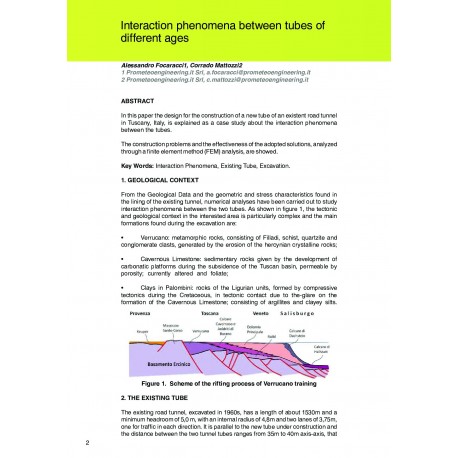Cart
0
0
No document
0,00 €
Total
Document successfully added to your shopping cart
Quantity
Total
There are 0 items in your cart.
There is 1 item in your cart.
Total documents
Total shipping
To be determined
Total
Search & filter
Search for a publication
Search & filter
Viewed documents
Interaction phenomena between tubes of different ages
2795_interaction_phenomena_betwe
In this paper the design for the construction of a new tube of an existent road tunnel in Tuscany, Italy, is explained as a case study about the interaction phenomena between the tubes.The construction problems and the effectiveness of the adopted solutions, analyzed through a finite element method (FEM) analysis, are showed. Interaction Phenomena, Existing Tube, Excavation.From the Geological Data and the geometric and stress characteristics found in the lining of the existing tunnel, numerical analyses have been carried out to study interaction phenomena between the two tubes. As shown in figure 1, the tectonic and geological context in the interested area is particularly complex and the main formations found during the excavation are:• Verrucano: metamorphic rocks, consisting of Filladi, schist, quartzite and conglomerate clasts, generated by the erosion of the hercynian crystalline rocks;• Cavernous Limestone: sedimentary rocks given by the development of carbonatic platforms during the subsidence of the Tuscan basin, permeable by porosity; currently altered and foliate;• Clays in Palombini: rocks of the Ligurian units, formed by compressive tectonics during the Cretaceous, in tectonic contact due to the-glare on the formation of the Cavernous Limestone; consisting of argillites and clayey silts.The existing road tunnel, excavated in 1960s, has a length of about 1530m and a minimum headroom of 5,0 m, with an internal radius of 4,8m and two lanes of 3,75m, one for traffic in each direction.




